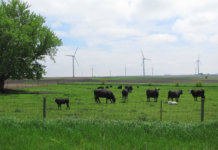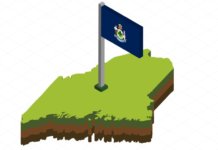The progress that offshore wind energy has made thus far in the U.S. could be stymied by cuts made under sequestration, U.S. Department of the Interior (DOI) Secretary Ken Salazar said at the Offshore Wind Power USA conference, which is being held in Boston this week.
‘We have made impressive gains – approving dozens of utility-scale solar, wind and geothermal projects in the West, and transitioning from planning to commercial leasing for offshore wind,’ Salazar said during his keynote address. "The potentially devastating impact of budget reductions under sequestration could slow our economy and hurt energy sector workers and businesses."
Mandatory budget cuts under sequestration could delay the DOI's ability to issue permits for new development, plan for new projects, conduct environmental reviews and lease new federal lands for future development – both for renewable and conventional energy, Salazar said.
The cuts would mean fewer studies, fewer opportunities to obtain meaningful stakeholder input, and delays in identification of potential use conflicts, Salazar continued, adding that the result could be a slower pace in identifying and leasing wind energy areas in federal waters, thus adversely impacting the DOI's ability to address offshore renewable energy management in a timely manner.
The DOI has already issued two non-competitive commercial wind energy leases – one off Massachusetts and another off Delaware – and is moving forward with the first-ever competitive lease sales for wind energy areas off Virginia and Rhode Island/Massachusetts, which will offer nearly 278,000 acres for development.
The areas proposed could support more than 4 GW of wind energy generation. Salazar also signed a lease and approved a construction and operations plan for the 130-turbine Cape Wind project.
Salazar said the DOI's Bureau of Ocean Energy Management (BOEM) will propose additional commercial lease sales this year for wind energy areas offshore New Jersey, Maryland and Massachusetts, and is working to determine industry interest in three areas off North Carolina. BOEM also is processing a lease request from Statoil to develop floating wind turbines in federal waters off Maine. Other demonstration projects are proposed off Virginia and Oregon.
In addition, BOEM is considering a mid-Atlantic wind energy transmission line that would 7 GW of wind turbine capacity to the grid. The Atlantic Wind Connection would run from southern Virginia to northern New Jersey, collecting power produced by wind facilities off New Jersey, Delaware, Maryland and Virginia and bringing it ashore.



